Welcome to our frequently asked questions section!
Here you will find answers to a wide variety of questions that are commonly asked about our products and services.
And if you don’t find the answer you’re looking for here, don’t hesitate to reach out to our team – they’re always happy to help!
So take a look around, and please let us know if there’s anything we can do to make your experience even better.
The following can be donated after death: heart, lungs, kidneys, liver, pancreas, small bowel (small intestine) and tissues which include bone, eyes (cornea and sclera), skin, tendons, heart valves and arteries. Living donors can donate a kidney or part of their liver, bone marrow and stem cells, blood and plasma. Where a child is involved, living donors are normally a close relative with parents being the most common donors.
Some organs can be donated between adults and children, but many others (such as the heart and lungs) require that the donor and recipient organs are of similar size. For this reason, young children on the organ donor waiting list are often waiting for life-saving organs that can only be donated from similarly aged donors.
It is your choice. You can choose to donate some organs but not others.
Passing on the ultimate gift of life isn’t restricted to any age category. In fact, the oldest donor on record was 104! While there is no age limit, children under the age of 12 in Scotland and under 18 in the rest of the UK always require parental consent when registering as organ donors. So ultimately, parents of minors have the final legal say. And of course, the decision about whether some or all organs or tissue are suitable for transplant is always made by medical specialists at the time of donation.
Currently, there are around 7,400 people on the transplant waiting list in the UK, 230 of them are children. Every day someone dies while waiting for an organ transplant. Children tend to wait two and a half times longer than adults, owing to a significant shortage of child organ donors, leading to children and their families waiting for a life-saving donation that tragically doesn’t always come to fruition.
All adults in the UK are now considered to have agreed to be an organ donor when they die unless they have recorded a decision not to donate or are in one of the excluded groups. This is commonly referred to as an ‘opt out’ system, also known as ‘deemed consent’, or ‘presumed consent’.
Parents and guardians from all communities and ethnicities can register their children, and children can register themselves at any time (and it only takes 2 minutes). By registering your decision on the NHS Organ Donor Register and talking to your loved ones, you can leave them certain about your choice. While there is no age limit, children under the age of 12 in Scotland and under 18 in the rest of the UK always require parental consent when registering as organ donors.
To become a stem cell donor in the UK, you need to meet specific eligibility criteria. Firstly, you must be aged between 16 and 55 years old, although it’s important to note that some registries may have slightly different age requirements. Additionally, potential donors must be in generally good health to ensure the safety and effectiveness of the donation process.
To register, you can sign up through various charities like Anthony Nolan and DKMS, these organisations are part of the UK Stem Cell Register. The ACLT charity can also provide you with all the information you need and who register with. After filling out a simple form, you’ll then need to submit a cheek swab sample. This sample is used to collect your tissue type, which is crucial for matching you with patients who need a donation
The donation organisation will contact you to discuss the donation process. Provided you are still healthy and willing to donate, your stem cells could be donated via a peripheral blood stem cell collection (this is the most common method and is similar to a blood donation), or less commonly, directly via bone marrow (in which case, you will be given anaesthesia and feel no pain during the donation). What happens if I’m a match for a patient? Both donation methods are very safe, with temporary discomfort being the most common side effect.
Around the world, there’s a critical shortage of life-saving organs, especially for children. In fact, kids tend to wait two and a half times longer than adults. Many die waiting. Only through widespread education and awareness initiatives can we hope to decrease waiting lists and save lives.
Promoting organ donation education for children also promotes a broader mindset of health, emphasising what’s inside our bodies as essential. Positive affirmations and a healthy living guide play a role in this approach, fostering empathy, compassion, and community support. Prioritising organ health also encourages people to make mindful lifestyle choices, promoting body positivity and self-acceptance. Ultimately, this approach saves lives and nurtures a holistic view of wellness.
It’s an operation whereby doctors replace a failed or damaged organ with a healthier one. For this to happen, organs need to be donated by organ donors. This only happens if the person receiving a new organ really needs one and could die if they don’t receive one. That’s why organ donors are a little like superheroes. When someone chooses to give their organs to someone else when they no longer need them, they’re really saving lives!
In order for a person to become an organ donor, blood and oxygen must flow through their organs until the time the organ is recovered. This means that most organs come from those who die suddenly from things like aneurysms, strokes or road traffic accidents. Donations only happen after every effort to save a patient’s life has been exhausted and either brainstem or circulatory death has been declared.
The following can be donated after death: heart, lungs, kidneys, liver, pancreas, small bowel (small intestine) and tissues which include bone, eyes (cornea and sclera), skin, tendons, heart valves and arteries. Living donors can donate a kidney or part of their liver, bone marrow and stem cells, blood and plasma. Where a child is involved, living donors are normally a close relative with parents being the most common donors.
While some organs can be donated regardless of the age and size of the donor and recipient, other organs (like the heart and lungs) need to be a certain size, and therefore require that donor and recipient are in a similar age bracket. Sadly, children tend to wait two and a half times longer for organs due to this fact.
Becoming an organ donor is the final, selfless, act of love that anyone can pledge. The legacy a donor leaves extends far beyond just the recipient/s of their organs: to the families of the people granted new life and on to their friends, peers and communities too. Furthermore, those in grief for the loss of a loved one (whether an adult or child) may draw immense comfort from the knowledge that their loved one’s legacy will live on in the lives they have helped to save through organ donation.
A single organ donor can save as many as nine lives and improve the lives of even more.
The first thing you should do is talk to your family. It’s vital that your loved ones know your choice concerning organ donation, and you, theirs. Depending on your country of residence, you can also sign up as a registered organ donor. And no matter where you live, you can make and share your own Mighty Pledge.
(Download the free poster on the Resources Hub!)
Although every person is different, there are some recurring themes as to why people don’t register. When it comes to families, and kids in particular, the most common barriers tend to be:
These resources have been developed in partnership with teachers and experts to be age-appropriate and spark a positive discussion around organ donation and transplants. Please check the slides before using them with your class, so that
you are aware of any material that may be sensitive for a particular student. Be especially aware of any instances of children in your class who have been recently bereaved. Adaptations may need to be made to the lesson or the timing of any related projects to accommodate this.
Most religions fully support the principle of organ and tissue donation as a life-saving gift – and also support the principle of blood, organ and stem cell (bone marrow) transplantation. They accept that organ donation is a matter of personal choice. As do we. Individuals and some other religious groups may, however, have different views.
The majority of school-going children value being informed about what their various organs actually do, how to keep healthy, and what organ donation and transplantation is all about. Yet, many teachers, parents, and healthcare professionals believe they lack the necessary information and resources to address the topics adequately. In every country where the Orgamites educational tools and resources have been introduced, the feedback has been overwhelmingly positive. Such multi-faceted, long-term strategies are gradually increasing the number of organs donated, reducing the lengthy waiting lists, augmenting the number of lives saved, and ultimately normalising organ donation. What’s more, they’re bridging the health education gaps to ensure there are far less pitfalls for the next generation to fall into.
Ultimately, regardless of what children learn about organ donation at school, the final decision always resides within families. The Orgamites Mighty Education Programme focuses on presenting the possibilities and scientific facts, leaving the organ donation conversation to parents and guardians.
While there are 78 organs in our bodies, there are smaller collection of organs that are the most-needed for transplants. These, animated by the Orgamites, consist of: Eye (which represents the transplantable cornea and sclera), Liver, Heart, Kidney, the Lungs, Pancreas and Small Bowel (or Small Intestine). Although not officially an organ, Bone Marrow (aka Captain Marrow) leads the team.
These have been specifically created to inform parents, allay any fears they may have, and equip them to have more conversations with their children at home. In the UK, regardless of the ‘opt out’ system, family members are always asked to make the decisions about organ donation at the end of life. Knowing how each member of your family feels regarding organ donation can make these painful decisions far simpler and less stressful. Unfortunately, very few have had this conversation with their families. A family discussion in a safe, comfortable place (long before there’s any pressing need) is the best way for everyone to share their choices and learn together.
Time and time again, it’s been proven that the single biggest deciding factor between those who choose to donate their organs and those who do not, comes down to whether they’ve talked about organ donation with their loved ones (even just once) before they (or their loved ones) pass on. The earlier
these conversations happen within families, the better.
While our educational resources go beyond just organ donation awareness, it is always an integral and foundational part of what we seek to do—connecting kids to greater levels of awe and appreciation for their bodies, their health and the people around them too.
According to the World Health Organisation and other leading health bodies, there are several major crises facing the next generation. These threats to our kids’ health and wellbeing include escalating rates of paediatric chronic disease, obesity, mental disorders, screen addiction, a plethora of social and behavioural concerns, and a critical shortage of organ donors. These are global concerns that affect all kids everywhere, and they’re increasingly affecting younger and younger children. Meaningfully addressing these concerns will require an unprecedented collective effort—with all of us (teachers, healthcare professionals, policy makers, parents and guardians) working together for the good of our kids.
Whilst students tend to be taught about the basic facts pertaining to their bodies, organs and health, there is often minimal space and time in the curriculum to truly engage with these topics in a way that can be easily applied to their day-to-day lives. Studies indicate that the sooner children form healthy habits, the more likely they are to stick with them and lead healthier lives into adulthood.
Anyone can download our free educational toolkits and resources. At present, there are three main toolkits, each consisting of fun, educational videos, lesson plans, worksheets, class activities and take-home resources too.
We would love you to! Please just give credit where it’s due and point children and their parents back to Orgamites.com to find out more. If you’d be so kind as to also consider joining us in changing the world by spreading our message further and wider still, we have a bunch of ideas to get you started on our GET INVOLVED Page.
Orgamites® is an organ donation and health education programme created by Roydon Turner. Creative and production by All Good Co. (CIC) © Copyright 2016. All rights reserved. CC BY-NC-ND 4.0 DEED
The Orgamites Mighty Education Programme is licensed under the Creative Commons Attribution-NonCommercial-NoDerivatives 4.0 International License.
To view a copy of this license, visit: https://creativecommons.org/licenses/by-nc-nd/4.0/.
The Orgamites Mighty Education Programme and its resources is free to share — copy and redistribute the material in any medium or format under the following terms: The work must be attributed properly, used for non-commercial purposes, and no modifications or derivatives are allowed.
Sounds exciting! Our team at All Good Co. (CIC) are always looking to see how we can team together to take the Orgamites further and wider.
Let’s get talking, only something good can come from it! Write to: Roydon@allgoodco.org
Please don’t hesitate to share with us the question that has been on your mind.
Thank you for your trust, and we look forward to hearing from you soon.
OUR PARTNERS
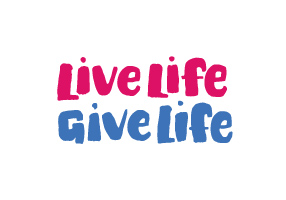
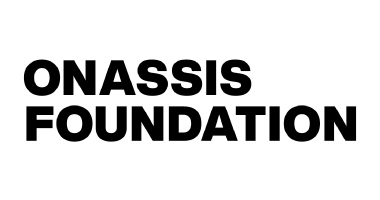

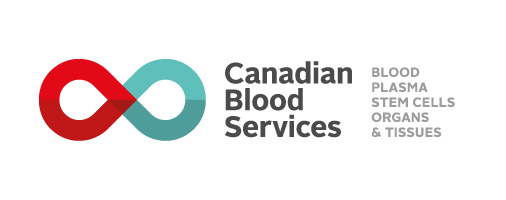
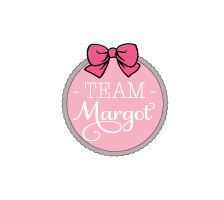
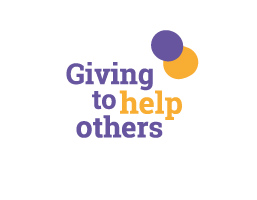
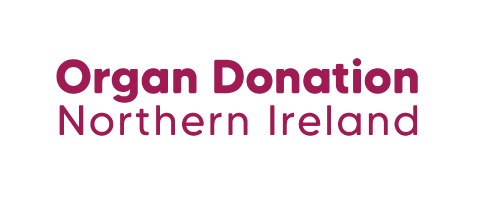
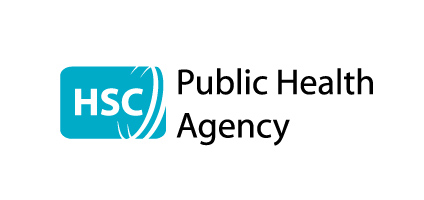
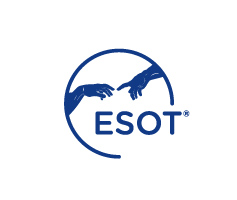
NEWSLETTER
Don’t worry, you can unsubscribe at any time.
LINKS
Orgamites®️ is an organ donation and health education programme created by Roydon Turner. Creative and production by All Good Co. CIC (AllGoodCo.org) © Copyright 2016. UK00003161288. (CC BY-NC-ND 4.0)
The Orgamites® Mighty Education Programme is a global organ donation and health education programme for kids aged 5-11. It uses educational resources, tools, toys, and tech to inspire and equip more students, teachers, and families everywhere to talk more about organ donation, and to take better care of their bodies, each other, and our world. Brought to life by a team of life-saving organs found in each one of us, the Orgamites® are also known as the ‘mighty organs’ because they represent the organs most needed for donation and transplantation. Focused on empowering children (via the grown-ups in their lives) to become captains of their own health, the Orgamites® Mighty Education Programme aims to address some of the most critical health crises facing the next generation (as identified by the World Health Organisation). Our partners include Live Life Give Life, the Onassis Foundation, Canadian Blood Services, Team Margot, Giving to Help Others, Northern Ireland Donation, the Public Health Agency, the British Transplant Society and European Society for Organ Transplantation (ESOT). Supported by NHS Blood and Transplant, Organ Donation Scotland. Official partner of the ESOT Congress in London, 2025.
Please complete the following fields to subscribe:
We welcome your communication, whether you’re curious about becoming a partner or have a general enquiry about our education programme. We’re a small, friendly team, so it might take a few days for us to get back to you. But rest assured, we’re eager to connect.
The Orgamites Mighty Education Programme is proudly brought to you by All Good Co., a Community Interest Company (CIC).
A CIC is a business primarily focused on social objectives, whose surpluses are principally reinvested in the business or community, rather than being driven by profit for shareholders and owners.